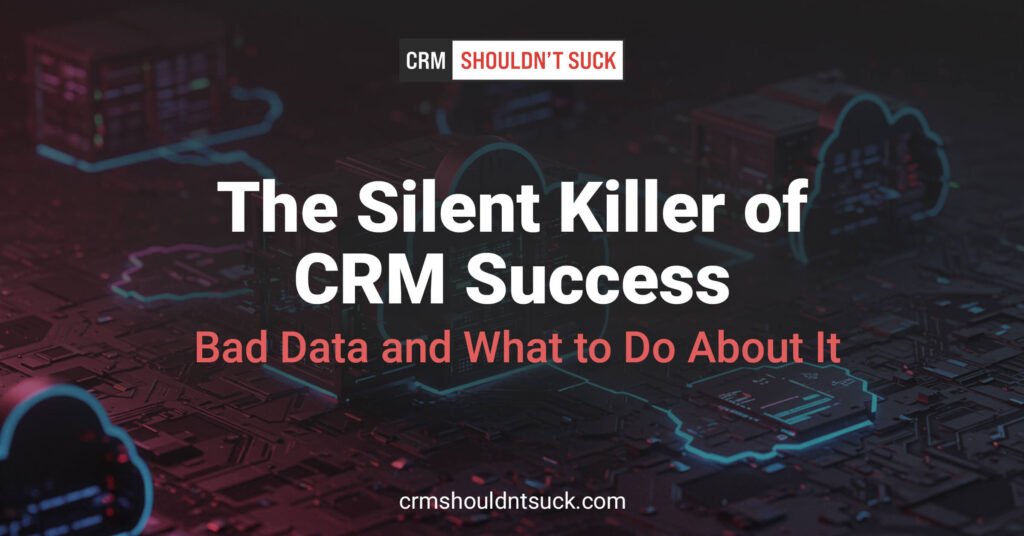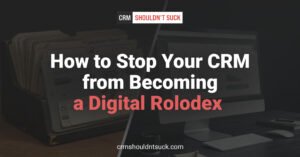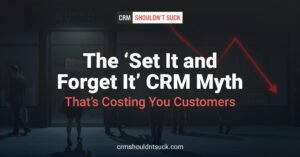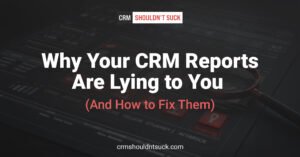It starts small. A single duplicated lead. An outdated email address. A misspelled company name. It doesn’t seem like a big deal at first, just a minor annoyance in the vast sea of your CRM data. But as time goes on, bad data quietly spreads through the system like a virus. Before you know it, your sales team is second-guessing the accuracy of reports, marketing campaigns are missing the mark, and leadership is making decisions based on flawed information.
Bad data is the silent killer of CRM success, eroding trust, muddying forecasts, and slowing down sales teams who should be focused on closing deals, not cleaning up records.
The Hidden Costs of Dirty Data
Most sales leaders don’t realize the true cost of bad data until it’s too late. When CRM data is inaccurate, incomplete, or outdated, it affects every part of the sales process.
Reps waste time chasing leads that no longer exist. Follow-ups land in dead inboxes. Customers get bombarded with irrelevant messaging, damaging relationships instead of strengthening them.
Meanwhile, forecasting becomes unreliable. Leadership expects one set of results based on CRM reports, only to be blindsided by an entirely different reality when deals fail to close. The disconnect isn’t because the sales team isn’t working hard enough; it’s because they’re working off the wrong information.
Where Bad Data Comes From
No CRM starts out broken. Data problems creep in over time due to a combination of poor input habits, system migrations, and lack of governance. The most common sources of bad data include:
- Manual entry errors – Reps input data inconsistently, using different abbreviations, formats, or omitting critical details altogether.
- Duplicate records – Multiple versions of the same contact, company, or deal pollute the system, making it difficult to track accurate engagement history.
- Outdated information – Employees leave companies, businesses merge, and prospects change roles, yet stale data remains in the system, misleading teams.
- Siloed systems – When CRM data isn’t properly integrated with other tools, information gets lost, duplicated, or inaccurately synced.
Turning CRM Data from Liability to Asset
Cleaning up bad data isn’t just about fixing past mistakes; it’s about building a system that keeps itself clean moving forward. That requires both process discipline and smart automation.
Define Data Standards
Set clear rules for how data should be entered and maintained. Standardize fields for phone numbers, addresses, and job titles. Require key details for lead creation to avoid incomplete records that waste time down the road.
Automate Data Hygiene
Leverage CRM automation tools to deduplicate records, validate email addresses, and flag inconsistencies before they become problems. AI-driven solutions can proactively scan for errors and help maintain a clean database with minimal manual intervention.
Train and Reinforce Good Data Habits
Technology alone won’t solve the problem. Train your team on why clean data matters and how it impacts their ability to sell effectively. Make data hygiene a routine part of pipeline reviews and team check-ins.
Conduct Regular Audits
Even with the best processes in place, data quality will degrade over time. Establish a schedule for ongoing data audits to catch inaccuracies before they cause major disruptions. Assign ownership to a dedicated team or individual to monitor CRM health.
The Bottom Line
A CRM filled with bad data is worse than no CRM at all. It breeds inefficiency, damages credibility, and prevents teams from making informed decisions. But data doesn’t have to be a liability. By establishing the right standards, automating cleanup efforts, and fostering a culture of accountability, companies can turn CRM data into a competitive advantage rather than a constant headache.
The organizations that win with CRM aren’t the ones with the fanciest systems. They’re the ones with the cleanest, most reliable data. If your CRM isn’t giving you that, it’s time to take a hard look at how data is managed before the silent killer takes over.



